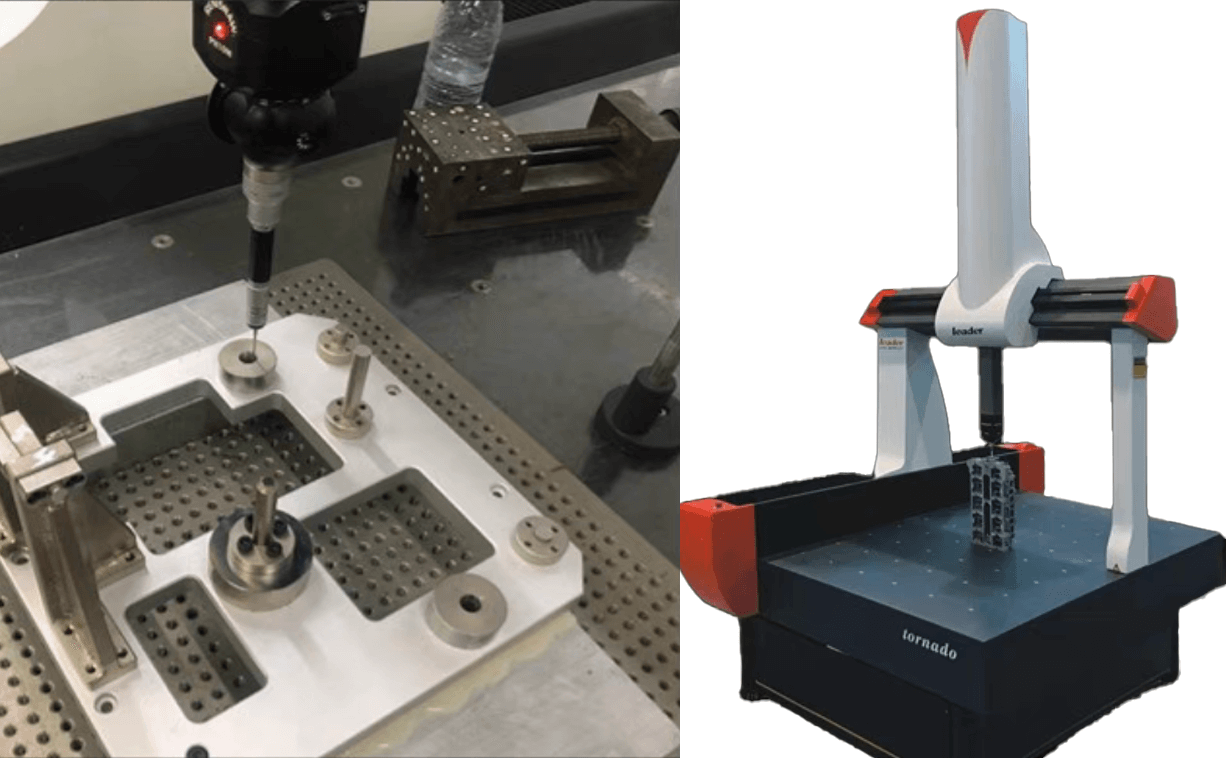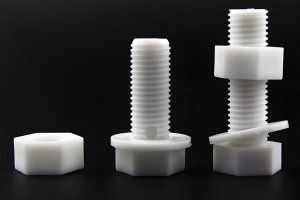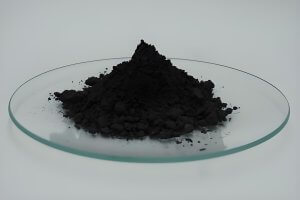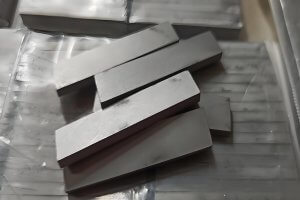When it comes to precision measurement in manufacturing, CMM machines (Coordinate Measuring Machines) have become indispensable. Selecting the right CMM machine for your specific production needs can be quite challenging, given the various types, features, and technologies available. For instance, custom machining processes often require a measurement system capable of adapting to different geometries and materials. When dealing with specialized CNC machined parts, it’s crucial to ensure the chosen CMM machine can handle complex tolerances effectively. From improving quality control to ensuring precision, choosing the right equipment is critical. I’ve had my fair share of experiences, both successes and learning moments, when selecting the best equipment to match the unique requirements of different projects. Let me guide you through how I approach this selection process, so you can make the most informed choice for your operations.
The Working Principle and Importance of CMM Machine
What Is a CMM Machine?
At its core, a CMM machine is a precision tool used for measuring the geometrical properties of objects. It operates by sensing discrete points on a workpiece and calculating dimensions such as size, shape, and location. Whether it’s for inspecting a single critical part or performing quality checks on mass-produced components, a CMM machine provides the accuracy needed to meet stringent manufacturing standards.
In my experience, the key to understanding a CMM machine’s importance lies in how it directly correlates to the overall quality and consistency of a production line. A well-selected CMM machine doesn’t just help you measure; it helps ensure that the entire process stays within tolerance, preventing costly mistakes later in the workflow. This role is critical in industries like aerospace, automotive, and medical device manufacturing, where accuracy can be the difference between success and failure.
The Role of CMM in Modern Manufacturing
I once worked on a project where we needed to produce a series of turbine blades. Precision was everything. With manual measurement tools, we simply couldn’t achieve the tolerances needed for such intricate parts. That’s when we brought in a CMM machine, and the difference was night and day. It not only improved our inspection process but also reduced the time it took to confirm part accuracy, which, in turn, optimized the entire production flow.
Today’s manufacturing world relies heavily on automation and precision, and CMM machines fit perfectly into that ecosystem. Their ability to interact with other manufacturing systems makes them vital in the push toward smarter, more efficient factories.
How to Choose the Right CMM Machine for Different Needs
Choosing the right CMM machine is not a one-size-fits-all decision. I remember, early in my career, being overwhelmed by the choices: bridge-style, cantilever, gantry, horizontal arm, and portable systems. Each has its unique advantages and is tailored to specific types of production environments. Let’s break down the main types of CMM machines and when to consider each.
Types of CMM Machines
| CMM Machine Type | Best For | Advantages | Disadvantages |
|---|---|---|---|
| Bridge CMM | General manufacturing | High precision, versatile | Can be expensive, large footprint |
| Cantilever CMM | Small part inspection | Compact, good for lab use | Limited workpiece size |
| Gantry CMM | Large parts | High capacity, good for heavy work | Requires large space |
| Horizontal Arm CMM | Automotive, aerospace | Suitable for large, complex parts | Lower precision than bridge types |
| Portable CMM | On-site or field measurements | Flexible, lightweight | Less precise than fixed models |
Key Factors to Consider
1. Workpiece Size
The size of the parts you’re measuring is one of the primary factors. If you’re working with small, delicate components, a cantilever or portable CMM machine might suit your needs. However, for larger objects, such as automotive body panels or aerospace components, a gantry or horizontal arm CMM will be a better fit.
2. Precision Requirements
In highly regulated industries like aerospace or medical devices, you need the utmost precision. In my experience, when tolerances are incredibly tight, a bridge-style CMM is often the best choice. These machines offer a level of stability and precision that is hard to beat. However, if you are working with larger parts, horizontal arm models can achieve good precision, but you may need to sacrifice a bit of accuracy compared to bridge CMMs.
3. Measurement Environment
Another point to consider is where the CMM machine will be placed. Environmental factors such as temperature fluctuations can affect measurement accuracy. Bridge and cantilever CMMs are ideal for controlled environments, like metrology labs, while portable CMMs are great for use on the factory floor, where conditions are less predictable.
4. Automation and Integration
In modern manufacturing, the need for automation is growing. If you’re planning to integrate the CMM machine into an automated production line, it’s crucial to ensure the machine can communicate with your other equipment. Some CMM machines come with software that allows for seamless integration, enabling you to automate the entire measurement process, reducing human error and saving time. This was a game-changer in one of my recent projects, where the CMM machine directly fed data back to the CNC system, allowing for real-time adjustments.
Improving Measurement Accuracy: Key Techniques in Using CMM Machine
Once you’ve selected the right CMM machine, maximizing its accuracy becomes the next priority. In my experience, the following techniques can significantly enhance the machine’s precision, ensuring reliable results.
Optimizing Probe Calibration
Probe calibration is often overlooked, but it’s critical for ensuring the machine’s accuracy. A miscalibrated probe can lead to measurement errors, which can accumulate over time, leading to costly reworks. I’ve learned that regular probe calibration, especially before any major production runs, can prevent these issues.
Measurement Path Optimization
The path the probe takes during measurement can greatly affect the accuracy of the results. One of the key lessons I learned early on was the importance of minimizing the distance the probe travels between points. A shorter, more direct path reduces the likelihood of errors caused by probe deflection or mechanical vibrations.
Software Settings
While hardware is crucial, the software plays an equally important role in maximizing measurement accuracy. In one project, I noticed that adjusting the software’s tolerance settings to match the specific needs of our part drastically improved the measurement results. Ensuring that the software is properly configured for your particular application is a small step that can make a big difference.
How Can CMM Machine Maximize Its Role in Quality Control?
Incorporating CMM machines into your quality control processes is not just about accuracy; it’s about efficiency and consistency. I’ve seen firsthand how effective CMMs can streamline quality checks and ensure that parts meet specifications before they leave the production floor.
First Article Inspection
One of the most common uses for a CMM machine is first article inspection (FAI). In my own projects, using CMM for FAI has reduced lead times by catching potential issues before mass production begins. By precisely measuring the first part off the line, you can identify discrepancies early, preventing costly rework down the road.
In-Process Inspection
Another powerful application of CMM machines is in-process inspection. By integrating CMM measurement with the CNC production line, real-time data can be used to adjust the machining process, ensuring that parts remain within tolerance throughout the production cycle. This closed-loop system has helped me avoid production delays and ensure a consistent level of quality across large production runs.
Final Inspection
Of course, CMM machines are essential in final inspection as well. At this stage, the machine verifies that the completed parts meet all specifications before shipment. In one recent project, we used a CMM to measure the final dimensions of complex aerospace components, ensuring compliance with tight tolerances and avoiding costly returns from the customer.
Common Challenges in Using CMM Machine and How to Overcome Them
Like any tool, CMM machines come with their own set of challenges. From my experience, here are some common issues and how I’ve learned to overcome them.
| Challenge | Solution |
|---|---|
| Probe damage | Regular maintenance, ensure correct probe for material type |
| Environmental factors | Use in controlled environments, ensure proper insulation in unstable areas |
| Measurement inconsistencies | Recalibrate probes regularly, optimize software settings |
| Integration with other systems | Choose a machine with compatible software, plan integration early |
| Limited machine capacity | Ensure machine type matches part size, consider gantry or bridge types |
Overcoming Environmental Issues
Temperature and humidity variations can wreak havoc on CMM machine accuracy. One of the lessons I’ve learned is that keeping the machine in a temperature-controlled room is critical. Even a slight temperature shift can lead to dimensional changes in the workpiece or machine components, affecting measurements.
Addressing Probe Damage
Probes are delicate, and I’ve seen damage occur from something as simple as selecting the wrong probe for a particular material. The solution is to carefully match the probe type to the workpiece material. Regular maintenance and inspection are also crucial to avoid damage and ensure long-term accuracy.
Software and Automation Integration: How to Make CMM Machine Work Smarter?
In recent years, I’ve noticed a growing emphasis on automation in manufacturing. As we push toward Industry 4.0, integrating CMM machines into fully automated production lines has become increasingly important. This section will explore how to leverage software and automation systems to get the most out of your CMM machine.
The Importance of Software in CMM Machine Operation
While the hardware in a CMM machine is crucial, it’s the software that drives precision and efficiency. Modern CMM machines are equipped with advanced measurement software that allows for data analysis, reporting, and even feedback into the production process. One of the tools I’ve personally found incredibly useful is Zeiss CALYPSO, which makes it easier to create custom measurement programs for complex geometries.
When choosing a CMM machine, it’s essential to consider the software that comes with it. Ideally, you want software that is:
- User-friendly: The more intuitive, the less time you’ll spend training operators.
- Customizable: Ability to tailor measurement programs to your specific parts.
- Data Integration Capabilities: Make sure it can feed data back into your CNC system, enabling real-time process optimization.
Automating the Measurement Process
Automating the measurement process is one of the best ways to enhance productivity. I’ve worked on projects where fully automated CMM measurement systems were integrated directly into the production line. This integration eliminated human error and drastically sped up the quality control process.
Closed-Loop Quality Control
One of the most significant advancements in recent years is the rise of closed-loop quality control. Here’s how it works: the CMM machine measures the part and feeds the data back into the CNC machine. The CNC machine then makes real-time adjustments based on these measurements to ensure the next part is even more precise. This type of system allows manufacturers to achieve consistent, high-quality parts with minimal human intervention.
| Process Stage | How CMM Machine Contributes |
|---|---|
| Pre-production | Calibrate CNC machines with initial measurement data |
| In-process | Real-time feedback ensures each part remains within tolerance |
| Post-production | Final inspection verifies part accuracy before shipping |
Enhancing Efficiency Through Software Upgrades
I’ve seen firsthand how regular software updates can breathe new life into an older CMM machine. For example, I once worked on a production line where we were having difficulty measuring complex free-form surfaces. A software update enabled us to use more advanced scanning techniques, drastically improving the measurement process. That’s why I always recommend looking for a CMM machine that comes with strong software support and regular updates.
Maintenance and Care Guide for Prolonging the Life of CMM Machine
Keeping a CMM machine running smoothly requires regular maintenance. I’ve learned that neglecting even the smallest maintenance tasks can result in costly downtime and repairs. Here’s my personal guide for maintaining a CMM machine based on years of experience in various production environments.
Regular Calibration
Calibration is perhaps the single most important maintenance task. I make it a habit to perform calibration checks regularly, particularly before any major production runs. Most modern CMM machines come with self-calibration features, but it’s essential to perform manual checks periodically to ensure accuracy.
Cleaning and Preventative Maintenance
A clean CMM machine is a happy CMM machine. Dust and debris can accumulate in the machine’s moving parts, leading to wear and tear over time. I always recommend cleaning the machine’s working surfaces daily and doing a more thorough cleaning at least once a month.
| Maintenance Task | Frequency | Tools Required |
|---|---|---|
| Probe calibration | Weekly | Calibration blocks, software |
| Surface cleaning | Daily | Lint-free cloth, mild cleaning solution |
| Lubrication of moving parts | Monthly | Manufacturer-recommended lubricant |
| Software updates | As needed | Internet connection, updated software patches |
Monitoring for Wear and Tear
I’ve found that early detection of wear and tear is crucial in avoiding machine downtime. Monitoring the condition of probes, bearings, and motors can give you a heads-up before a small issue turns into a major problem. Some CMM machines come with built-in diagnostic tools, but regular manual checks are also a good idea.
The Role of CMM Machine in Smart Manufacturing
As we move further into the age of smart manufacturing, CMM machines are evolving to meet new demands. I’ve been particularly excited about the future of CMM technology, especially its integration with Industry 4.0 concepts like the Internet of Things (IoT) and artificial intelligence (AI).
CMM Machines and Industry 4.0
In smart factories, machines communicate with each other to optimize production. CMM machines play a vital role in this ecosystem by providing accurate, real-time measurement data that can be fed into the broader manufacturing system. In one of my recent projects, we used CMM data to adjust CNC machine settings on the fly, resulting in a noticeable improvement in production efficiency.
Artificial Intelligence in CMM Measurement
AI is another technology that’s starting to make waves in the world of CMM. AI-driven CMM machines can learn from past measurements, automatically optimizing measurement paths and predicting issues before they arise. While we’re still in the early stages of AI integration, I believe it’s only a matter of time before this becomes a standard feature in high-end CMM machines.
Conclusion
Choosing the right CMM machine for your production needs isn’t just about picking the most expensive model or the one with the most features. It’s about finding the machine that best fits your specific requirements, whether that’s the type of parts you produce, the environment you work in, or the level of precision you need. With proper selection, maintenance, and software integration, a CMM machine can significantly improve both the quality and efficiency of your production process.
FAQ: CMM Machine
- How can I quickly calibrate my CMM machine for accurate results?
Calibration is best done using precision calibration blocks provided by the manufacturer. Automated calibration routines can be initiated through the machine’s software, but regular manual checks are recommended. - What’s the best probe type for measuring complex surfaces?
For complex geometries, I recommend a multi-sensor probe system that can switch between tactile and optical measurements. This gives you the flexibility to measure both small details and larger surfaces. - How do I avoid measurement errors caused by environmental factors?
Ensure your CMM machine is in a temperature-controlled environment. Fluctuations in temperature can cause expansion and contraction in both the machine and the part, leading to inaccurate measurements. - Can CMM machines integrate with CNC production lines?
Yes, modern CMM machines can communicate directly with CNC systems, allowing for real-time adjustments based on measurement data. - How do I know when to replace the probe on my CMM machine?
Regular visual inspection of the probe for signs of wear, along with periodic performance checks, can help you determine when replacement is necessary. - What are the benefits of using a portable CMM machine for on-site measurements?
Portable CMM machines are ideal for field use or when measuring large parts that can’t easily be transported to a traditional CMM machine. While they may sacrifice some precision, their flexibility is unmatched. - What are the best practices for maintaining the software of a CMM machine?
Regularly update the software with the latest patches and ensure the system is compatible with your current operating environment. Backups of measurement programs should also be part of your routine. - How can I speed up the measurement process without losing accuracy?
Optimize your measurement path and reduce unnecessary probe movements. Multi-sensor systems can also speed up the process by allowing different types of measurements without changing probes. - What data can be used to optimize CNC processes based on CMM feedback?
CMM machines provide detailed reports on part deviations, which can be used to fine-tune CNC programs. This data is particularly valuable for making real-time adjustments to the cutting process. - How does temperature affect the measurement accuracy of a CMM machine?
Even small changes in temperature can cause material expansion or contraction, affecting measurement accuracy. Keep your CMM in a climate-controlled environment for the best results. - How often should CMM machines be serviced or recalibrated?
While this depends on usage, a good rule of thumb is to perform calibration checks weekly and have the machine professionally serviced at least once a year. - Can CMM machines measure plastic parts with the same accuracy as metal parts?
Yes, but you’ll need to account for the fact that plastics are more susceptible to thermal expansion. Probe type and measurement techniques may need to be adjusted accordingly. - What software updates are necessary to keep a CMM machine running smoothly?
Keep an eye out for updates that improve the machine’s measurement algorithms or add new features for specific industries. Most manufacturers release regular updates, so it’s important to stay current. - How does a bridge-type CMM differ from a cantilever-type CMM in practical use?
Bridge-type CMMs offer more stability and are ideal for high-precision work, while cantilever CMMs are more compact and suited for smaller parts. - Can a CMM machine help reduce overall manufacturing costs?
Absolutely. By catching defects early in the production process, CMM machines can help reduce scrap rates, rework, and production downtime, all of which contribute to lower overall costs.
Other Articles You Might Enjoy
- What is a CMM Machine?
Accuracy in geometric and physical dimensions is essential for every manufacturing process. In the world of CNC machining, there are two methods are available to achieve these goals. The conventional…
- How CMM Machine Precision Enhances CNC Custom Parts with Zeiss CMM
Precision is the cornerstone of custom part manufacturing, especially when it comes to complex designs and tight tolerances. For those of us working closely with CNC (Computer Numerical Control) technology,…
- Machining Techniques for Parts: Unlocking CNC and Cutting-Edge Tech
I. Introduction I remember the first time I realized how critical machining is to modern manufacturing. I was interning at a small shop, watching a CNC machine carve intricate features…
- The Application of Coordinate Measuring Machines (CMM) in Modern Machine Shops
Precision plays a crucial role in today's CNC machining industry, with measurements reaching tenths of microns and continually increasing. As machine tools become more precise, accurately measuring the deviation of…
- Aluminum vs. Steel: Choosing the Right Material for Your Manufacturing Needs
Introduction: Aluminum vs Steel in Manufacturing In the realm of manufacturing, the primary materials often employed are aluminum and steel. Each possesses distinctive properties which make them particularly suited for…
- Aluminum vs. Steel: Choosing the Right Material for Your Manufacturing Needs
Introduction: Aluminum and Steel in Manufacturing In the manufacturing sector, two of the most commonly utilized materials are aluminum and steel. These metals find widespread use due to their unique…
- Mastering Bead Blasting in CNC Machining(cmm Susie)
Bead blasting is a distinct element of computer numerical control (CNC) machining that adds aesthetics and functional properties to machined parts. It's known for its capability to produce an appealing,…
- Revolutionizing CNC Machining for the Aerospace Engineering Sector
Introduction to CNC Machining in Aerospace Engineering CNC machining, which stands for Computer Numerical Control machining, is a manufacturing process that utilizes digital instructions to operate machine tools like lathes…






